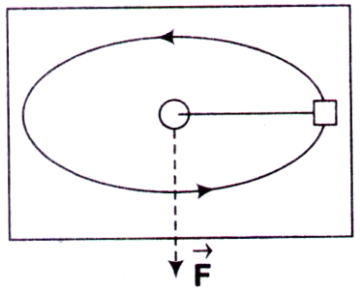A rigid frictionless rod rotates anticlockwise in a vertical plane with angular velocity $$\overrightarrow \omega $$. A bead of mass m moves outward along the rod with constant velocity $$\overrightarrow {{u_0}} $$ . The bead will experience a coriolis force
A. $$2{m_0}u\omega \hat \theta $$
B. $$ - 2m{u_0}\omega \hat \theta $$
C. $$4m{u_0}\omega \hat \theta $$
D. $$ - m{u_0}\omega \hat \theta $$
Answer: Option B
A. increases till mass falls into hole
B. decreases till mass falls into hole
C. remains constant
D. becomes zero at radius r1, where 0 < r1 < r0
A. $$\frac{c}{3}$$
B. $$\frac{{\sqrt 2 }}{3}c$$
C. $$\frac{c}{2}$$
D. $$\frac{{\sqrt 3 }}{2}c$$
The Hamiltonian corresponding to the Lagrangian $$L = a{{\dot x}^2} + b{{\dot y}^2} - kxy$$ is
A. $$\frac{{{p_x}^2}}{{2a}} + \frac{{{p_y}^2}}{{2b}} + kxy$$
B. $$\frac{{{p_x}^2}}{{4a}} + \frac{{{p_y}^2}}{{4b}} - kxy$$
C. $$\frac{{{p_x}^2}}{{4a}} + \frac{{{p_y}^2}}{{4b}} + kxy$$
D. $$\frac{{{p_x}^2 + {p_y}^2}}{{4ab}} + kxy$$
A. circular
B. elliptical
C. parabolic
D. hyperbolic


Join The Discussion